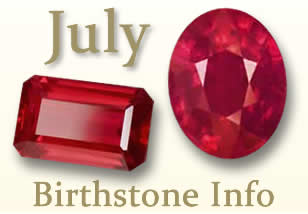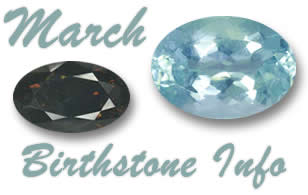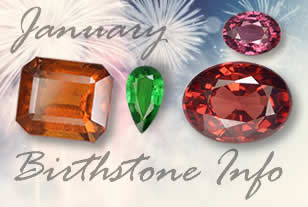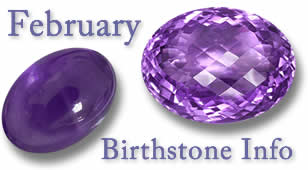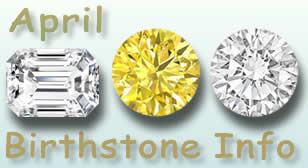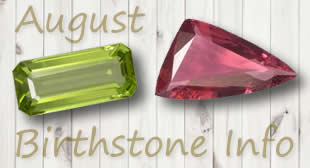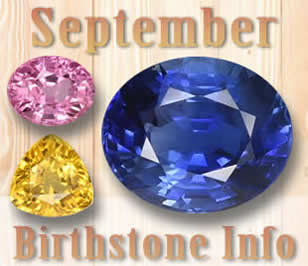What can I find in this article?
- What is the color of emerald?
- Etymology, History and Lore of the May Birthstone
- What is the spiritual meaning of emerald?
- Healing Properties and Health Benefits of Emerald
- What is the durability of emerald?
- Cleaning and Caring for Emerald
- How much do May birthstones cost?
- Are there any secondary May birthstones?
- Final Thoughts
The May Birthstone - Emerald
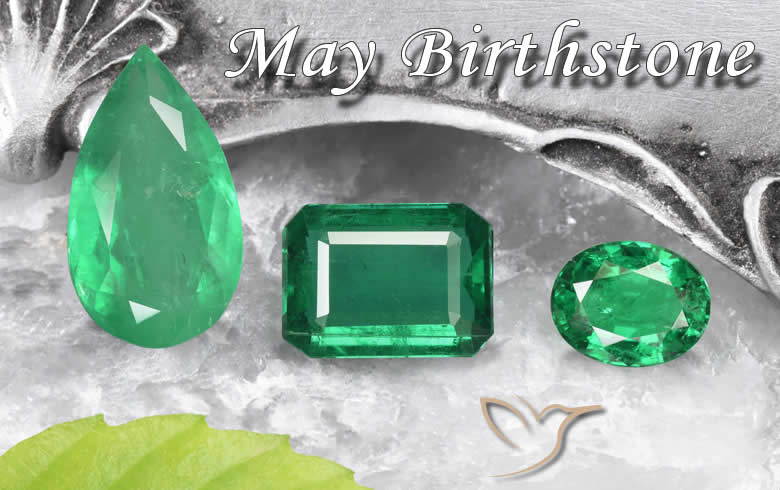
Emerald, one of "The Big Four" (diamond, emerald, ruby and sapphire) precious gemstones, is the primary choice of birthstone for May. Favored by Aristotle, Cleopatra, and host of nobility, royalty and celebrity from past to present, emerald has been highly prized for over six thousand years, in nearly every culture and civilization on Earth.
A bluish green to green variety of beryl, emerald symbolizes the verdant growth and luscious abundance of spring.
This rich gem has a durability that lends itself well to all types of birthstone jewelry, and it will open and nurture the heart of whoever wears it.
As a member of the beryl family, the only thing that distinguishes emerald from its siblings (aquamarine, morganite, goshenite, etc.) is its color - emerald green - though what actually constitutes emerald green is up to interpretation. Gem dealers and market traders have an incentive to recognize this color profile because the difference in the prices of emerald and green beryl can be thousands of dollars per carat.
The color of the May birthstone, commonly associated with green, can range from bluish green to green and slightly yellowish green. However, simply having the right hue is not enough to be considered an emerald; the stone must also exhibit rich saturation (color intensity) and tone (lightness and darkness of color). The most sought-after emerald is one with a slightly bluish green hue, medium dark tone, and strong to vivid saturation. Gemstones with lighter, weaker tones are categorized as green beryl.
With so much potential profit on the line, the nuances of these color values are hotly debated, criticized and analysed. Some argue that beryl colored by vanadium (not chromium) should be classified as green beryl, but generally (including the GIA) these gems are still classified as Emeralds.
As with all transparent gemstones, clarity is related to the color and emerald is no exception. Due to numerous inclusions and surface fissures, emeralds are typically graded by eye and not the jeweler's loupe (10x magnification), as with diamonds. Therefore, if there are neither inclusions nor surface fissures visible to the eye, the emerald is considered flawless.
Moreover, emeralds that lack surface fissures are extremely rare, and most of these May birthstones on the market have been fracture-filled with a natural oil, such as cedar, which has a refractive index close to that of emerald. This practice is so common that it is generally accepted in the gem trade; conversely, the use of green-tinted oils is considered an unacceptable and unethical (if left undisclosed) practice among gemstone professionals and should be avoided.

Origin of Emerald
As with much of gemstone etymology, the tale of how emerald came to be called such is a fascinating one that twists and turns through many centuries, countries and languages. To the ancient Egyptians, Arabs, and Hebrews, emerald was called bwyrq (Egyptian "to sparkle"), barq (Arab "flashing"), and baraket (Hebrew "emerald, flashing gem").
The path toward our modern use of the name emerald began when it was called marakata by the ancient Indians, a word that means "the green growing of things". This word made its way in some form into Persian, which was then translated by the Greeks to become smaragdos, "green stone". This term was then adopted into Vulgar Latin as smaralda, then into Old French as esmeraude, and finally Old English as emeraude.
Lore of the May Birthstone
Pliny the Elder, Rome's first century naturalist and philosopher, lauded emerald, declaring that "nothing greens greener" than emerald. He went on to describe how lapidaries would restore their fatigued eyes by "looking at the emerald, its soft, green color comforting and removing their weariness and lassitude." This belief has continued to modern times in which metaphysical healers use emeralds to alleviate eye strain.
Worn in the ancient world as a talisman to protect one from enchantment and evil spells, the May birthstone was also considered a revealer of truth that could "see" through lies and false oaths. The ancient Hindus offered emeralds to Lord Krishna to receive knowledge of the soul and the eternal, while the ancient Egyptians regarded emerald as a symbol of fertility and rebirth.
Moreover, the Hindus associated emerald with the planet Mercury, though it became connected to the planet Venus by the Romans. As we regard the zodiac in modern astrology, both planets are considered ruling planets for May birthdays; Taurus (May 1 - 20) is ruled by Venus, and Gemini (May 21 - 31) is ruled by Mercury. As the bright planet Venus hangs so prominently in the night sky, glowing like an emerald, it is no wonder that the Romans made this attribution.
The Historical Journey of Emerald
The enchantment with this adored May birthstone began more than 6,000 years ago when it was first sold in the markets of Babylonia, around 4000 BCE. However, this is merely a historical note; the wondrous allure of emerald and the effect it has had on humankind likely goes further back than recorded time.
The Egyptians were the first to mine emerald on an industrial scale around 1500 BCE, mainly in an area called Mons Smaragdus (Emerald Mountain) by the Romans.
This site remained active throughout exploitation by the Roman and Byzantine empires, as well Muslim raiders, until the discovery of large emerald deposits in modern-day Colombia during the 1520s made the mine unprofitable and caused it to close, leaving only ruins behind.
Cleopatra's Emeralds
Mt. Smaragdus is best known for supplying the emeralds so beloved by Queen Cleopatra, a name that evokes images of sublime beauty and intense passion. The May birthstone was so beloved by Cleopatra that she literally surrounded herself with them; she wore them as ornaments, adorned her palace with them, and often gifted them to foreign dignitaries. In all likelihood, Cleopatra is largely responsible for popularizing emeralds.
Nearly 2,000 years later, another iconic beauty, Elizabeth Taylor, analogous in many ways to Cleopatra, would play the legendary Egyptian queen in the 1963 film Cleopatra. While in Italy during this production, Taylor's lover Richard Burton, gave the Queen of Hollywood a Bulgari emerald and diamond suite (a necklace, pendant, earrings, rings, and bracelet).
There are many approximations of what the historical Cleopatra looked like. If you want to see a stunning impression in full definition and color, just have a look at Elizabeth Taylor as she donned these outstanding pieces of emerald jewelry.
The May Birthstone and Infamy
When 16th century Spanish explorers arrived in the New World, particularly the pre-Colombian region, they found the Incas using the May birthstone in their ceremonies, as well as trading with it, which they did with the Spanish. With an insatiable thirst for gold, the Spanish had little interest in emerald and traded it for precious metals throughout Europe and Asia.
One of these emeralds made its way from the Incas to the Aztec empire in Mexico, where it was possessed by King Moctezuma II, and called "The Emerald of Judgement". Moctezuma II gave the emerald, along with many gifts of gold and other precious items, to Hernan Cortez, the Spanish conquistador, when he arrived in 1519, hoping to avoid a massacre like the one Cortez had committed previous to this encounter in Mexico's second largest city, Cholula, where Cortez and his men ruthlessly murdered thousands of unarmed noblemen and women. Cortez's bloodlust was apparently abated by the royal treatment; he left the Aztec capital intact, and accepted the emerald, which he called "The Isabella Emerald" for the Queen of Spain.
Incredibly, this 964 carat emerald was lost at sea in 1757, when a Spanish ship carrying it back to Europe sank in the Atlantic, somewhere near the infamous Bermuda Triangle, only to be discovered over 200 years later by treasure salvagers in 1992. Current appraisals of the Queen Isabella Emerald value it at over $20 million, a price some consider too conservative.
Sourcing the May Birthstone
The May birthstone is mined all over the world. There are significant deposits in South America, Africa, Australia, India, Russia, Afghanistan and the US, although Colombia is the most famous source for "deep green" emeralds.
Today, Brazil and Zambia are among the leading producers of fine emeralds, after Colombia.
Brazilian emeralds are prized for their excellent clarity and slightly yellowish green color; while Zambian emeralds are desired for their slightly bluish green color, which is similar to that of Colombia's 'emerald-green' emeralds.
The emerald is often associated with spiritual qualities such as love, compassion, and healing. It is believed to promote balance, growth, and harmony in relationships, as well as enhance spiritual awareness and inner peace. The May birthstone's name is synonymous with green, a color that represents growth, nature, money, fertility and safety. As the color of the Heart Chakra, the wellspring of emotions, green is a positive color that balances our emotions, enabling us to love ourselves and others unconditionally. This significance is likely why the Romans attributed emerald to Venus, goddess of love.
As a stone of inspiration and boundless patience, emerald conveys unity and compassion, promotes friendship and harmony between partners, and is particularly well-known for encouraging domestic bliss, contentment and loyalty in marriage. In fact, the May birthstone is often given on the 20th and 35th wedding anniversaries.
The May birthstone is known for its association with vision, both the physical ability to see, as well as intuition and the psychic ability to foretell future events. Furthermore, emerald is regarded as a gemstone of wisdom that can enhance memory and mental acuity. Through a combination of intelligence and insight, the May birthstone connects the unconscious and conscious mind, a process that opens up psychic powers of clairvoyance.
Emerald and the Body
Emerald is known to combat aging by rejuvenating and revitalizing debilitated organs. The May birthstone's connection to the heart is physical, as well as spiritual, and it is known to treat cardiac weakness. Moreover, emerald can be useful in treating ailments and conditions of the lungs, liver, gall bladder, pancreas, and kidneys, as well as the musculoskeletal system.
The May birthstone is best known throughout the ages as the quintessential gemstone for treating the eyes and restoring eyesight. Strained eyes can be soothed by a bath of emerald water, while the same concoction can alleviate eye infections. Drinking such an elixir is excellent for treating gout and strengthening memory.
There is an immense host of illnesses that may be treated by the use of emerald as a healing gemstone. These include cancer, colic, epilepsy, high blood pressure, skin disorders, syphilis, dysentery, vomiting, indigestion, asthma and anemia. There was a time when emerald was highly prized as an antidote to poisoning. In fact, today there are Chinese folk healers using the powder of poorer quality emeralds to concoct their medicines.
Emerald and the Mind
Known as "The Stone of Successful Love", the May birthstone is excellent for reviving passion, providing healing to all levels of the being, and imparting a freshness and vitality to the spirit. It can also promote and restore a person's confidence and self-esteem.
Wearing Emerald can invigorate thought, reflection and philosophy, making it a prime gemstone for activating artistic creativity.
Emerald's effect on mental acuity and memory provide one with the ability to speak eloquently. Moreover, holding a natural emerald for just 5 minutes a day can give one the power to rapidly recall facts. Overall, emerald is a great crystal for the workplace, as it nurtures balance, harmony and cooperation.
Finally, emerald has the ability to alleviate any heaviness in our auric field by eliminating the negative energy that tends to create destructive patterns of behavior, and nourishing us with hope, encouragement, gentleness and abundance. It is especially useful for those who have suffered a heartbreak, as it empowers people to overcome such misfortunes, enabling them to see beyond their perceived victimization and into a future of love, vitality and compassion.

The concept of gemstone durability is comprised of three factors: hardness (resistance to scratching), toughness (resistance to chipping, cracking and breakage), and stability (resistance to chemicals, high temperatures, and light).
Emerald's hardness is very good; all beryl are rated as 7.5 - 8 on the Mohs Hardness Scale, putting it in league with aquamarine, topaz, tourmaline and zircon.
See our article on the Mohs Hardness Scale here
Most importantly, emerald is above quartz (Mohs 7), the second most abundant mineral on Earth, which is often airborne and can unknowingly settle on gemstone jewelry, only to be carelessly wiped away, causing scratches to the surface.
Despite emerald's relative hardness, its many inclusions and surface-breaking fissures give it a toughness that can range from good to poor, depending on the amount and nature of the inclusions and fractures. Due to such fissures and fractures, oils, resins and polymers are typically used as surface treatments for emeralds. Such treatments can be compromised and deteriorated by exposure to light, heat, and chemicals. Moreover, heat can expand fissures and cause other damage to emerald; therefore, these conditions should be avoided at all costs.
What this means for the wearability of the May birthstone is that one needs to take special care with emerald jewelry to avoid any knocks against hard surfaces. Though emerald is used in all applications of jewelry, from rings and bracelets, to pendants, earrings and brooches, wearing emerald every day is something that requires a considerable amount of caution.
Furthermore, the May birthstone should be surrounded by protective metal settings or more durable, smaller gemstones to prevent the emerald from incurring chips, fractures, or breakage.
As a universally cherished and highly prized gemstone, perhaps it is better to reserve emerald jewelry for special occasions. However you choose to wear it, emerald jewelry should always be removed before physical activity or situations where it may be exposed to intense light, heat, or chemicals.
How can I clean emerald?
Cleaning gemstones with warm soapy water and a soft brush is always the safest method, and this especially applies to emerald. Some estimate that nearly 90% of natural emeralds have had some type of surface treatment to fill fractures with oils, resins or polymers. The intense heat of steam cleaners can not only cause new fractures and exacerbate existing ones, it can cause these fillers to sweat out of the fractures. A similar concern is applied to the use of ultrasonic cleaners: the vibrations of these cleaners can weaken already fractured emeralds, as well as loosen jewelry settings. Therefore, both of these cleaning methods are not recommended for emerald.
How should I store my emeralds?
Due to emerald's hardness, it is important to protect softer stones from being scratched. Similarly, you will want to prevent scratches to your May birthstones from harder gems (chrysoberyl, ruby, sapphire, diamonds), as well as protect them from knocking against hard surfaces. Therefore, it is imperative to keep your emeralds separate from all other gems of different hardness (and especially toughness) in a fabric-lined compartment of a jewelry box. Individual cloth jewelry bags are also suitable, if you have limited space in your box.
Another space-saving method is to use acid-free paper envelopes, called "parcel paper envelopes" or "diamond papers", to keep gemstones of the same hardness together and arranged in a parcel paper organizer box. Glass jars with foam or fabric inserts are perfect for those who want to showcase their loose gemstones and jewelry.
Emeralds can be pricey, but you don't need Richard Burton's bank balance to afford the May birthstone. Prices range from $12 per carat to over $3,000 per carat, depending on origin, clarity, color and size.
For instance, a 0.5 carat, oval facet, warm green Colombian emerald goes for just over $40. An emerald of this size would make a charming feature for a ring, or set into a bracelet. Emerald prices vary based on factors like color, clarity and weight. A less included emerald would see an increase in price per carat.
Of course you can spend as much as you want on emerald for your Cleopatra. Check out our selection of top quality emerald gemstones.
Agate
Historically, agate was thought of as a May birthstone. Agate belongs to the quartz mineral family and was given its name by Theophrastus, a 4th century BCE Greek naturalist and philosopher, who discovered the stone in the Achates River in Sicily. It has a Mohs hardness of 6.5 - 7, a high resistance to chemical attack, and maintains a highly polished surface, making it an excellent choice for daily wear jewelry.
Agate is usually found alongside numerous other types of rock, but it is primarily classified as volcanic rock. Agate occurs in a wide range of colors and patterns. Although some colors occur more commonly than others, almost all agate will be multicolored due to its unique banding. Single-colored agates can occur naturally, but most of the stones available today have been dyed to obtain unicolor. Single-colored agates are often traded using specific trade names, such as Sard and Carnelian. Agate colors can include black, white, blue, red, green, yellow, orange, brown, pink, purple and gray.
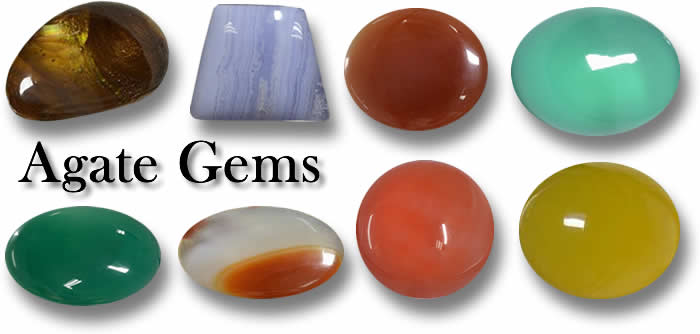
This secondary birthstone is also considered the Ayurvedic (Indian system of medicine) birthstone for May. Agate gemstones are one of the oldest stones in recorded history. Agate is known as a stone of protection from nightmares, stress and fatigue. Since biblical times, agates have been worn and used in jewelry to protect against imminent storms. They were highly valued as talismans and amulets throughout ancient times.
Agate has the ability to quench thirst and protect from fevers. Alternative healers will place agate stone on the solar plexus to alleviate stomach illnesses. Agate is a stone of strength and gives the power to move forward and carry on through tough times.
Chrysoprase
In contemporary Britain, chrysoprase, a variety of chalcedony quartz, is considered a May birthstone, as well.
Chrysoprase is highly prized for its opalescent minty, apple-green color, which is especially unique and is owed to its distinctive coloring agent - nickel. This color is in fact reminiscent of the finest quality of jade. Chrysoprase is considered to be one of the rarest and most valuable varieties of chalcedony quartz, second only to the rare green-blue gem silica, which is also known as 'chrysocolla chalcedony'. It has the same Mohs hardness as agate and is considered a great choice for durable May birthstone jewelry.
The name "chrysoprase" originates from the Greek words, chrusos and prason, meaning 'gold' and 'leek', respectively; referring to its leek-green color and the presence of golden inclusions. This secondary May birthstone was highly prized by Greeks, Roman and Egyptians alike for its many great powers and alluring soft color. According to Greek legend, chrysoprase ensured a happy marriage and good health, and its power was 'recharged' when placed out in the open during half-moons.
Chrysoprase is said to help balance the conscious and unconscious realms of the mind. It carries very strong energy and crystal power, which can bring happiness, protection, success, friendship, good fortune and prosperity. Chrysoprase promotes inner-strength and courage.
Physically, chrysoprase is said to be able to strengthen eyesight, reduce blood pressure and relieve pain from rheumatism. Chrysoprase is a powerful stone that brings poise, grace and mental dexterity. It is also thought to be able to reduce inferiority complexes and mend broken hearts by boosting self-esteem.
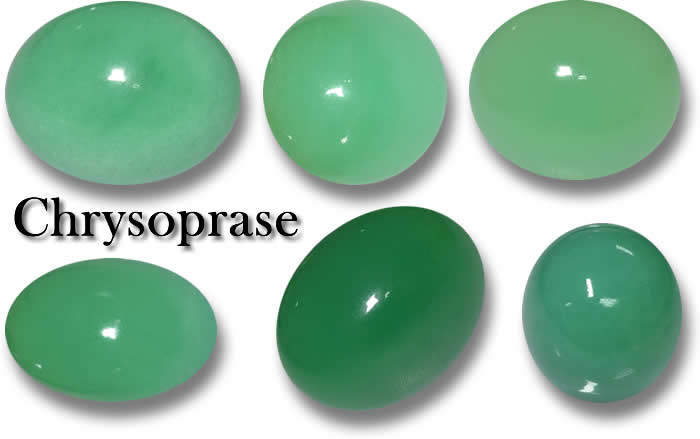
Emerald is truly the queen of all gemstones; anyone born in May is fortunate to have such an exquisite and noble gem as their birthstone. Able to strengthen the physical vision, as well as the psychic, emerald opens the heart and balances the emotions so that we can live in unconditional love and compassion.
Emeralds are a lot like people: some have more faults than others, but overall they are durable enough to stand up to daily life, as long as it is done with a bit of caution and awareness. Emeralds make a fantastic choice for all types of jewelry - especially May birthstone jewelry! A reputable gem dealer like Gemselect can help you find all the ethically sourced emerald your heart desires. Come and have a look today!
Disclaimer
Disclaimer GemSelect has been buying and selling gemstones for many years now and in that time we have built up quite a relationship with our customers and suppliers. We are not experts in the meanings and health benefits of gemstones but we have been able to speak with and take advice from people who are.
We are based in Thailand where the belief in spiritual and physical benefits of gemstones, herbs, prayers, pilgrimages, amulets, colors and the stars is common and part of nearly everyone's daily life.
All of our employees have some experience with using gemstones or amulets in order to improve or maintain their physical or emotional health.
The powers of gemstones have been chronicled for 1000s of years and proven time and time again to be effective in improving people lives in many, many ways but we must stress that they are not a replacement for medical treatment.
If you feel unwell or are concerned about your mental health please contact qualified medical help as soon as you can.
In addition we try to research and verify information about the history and efficacy of each gemstone using the internet and various reputable books published by a number of sources.

